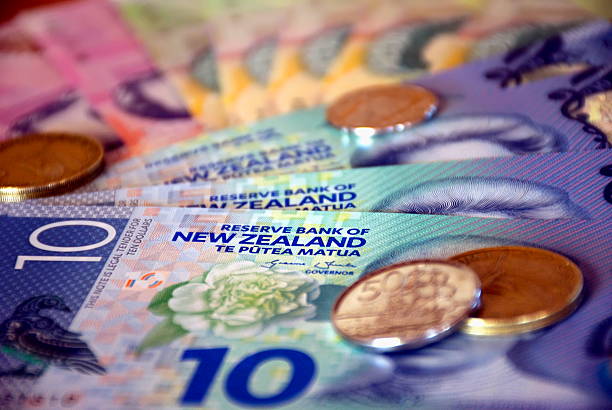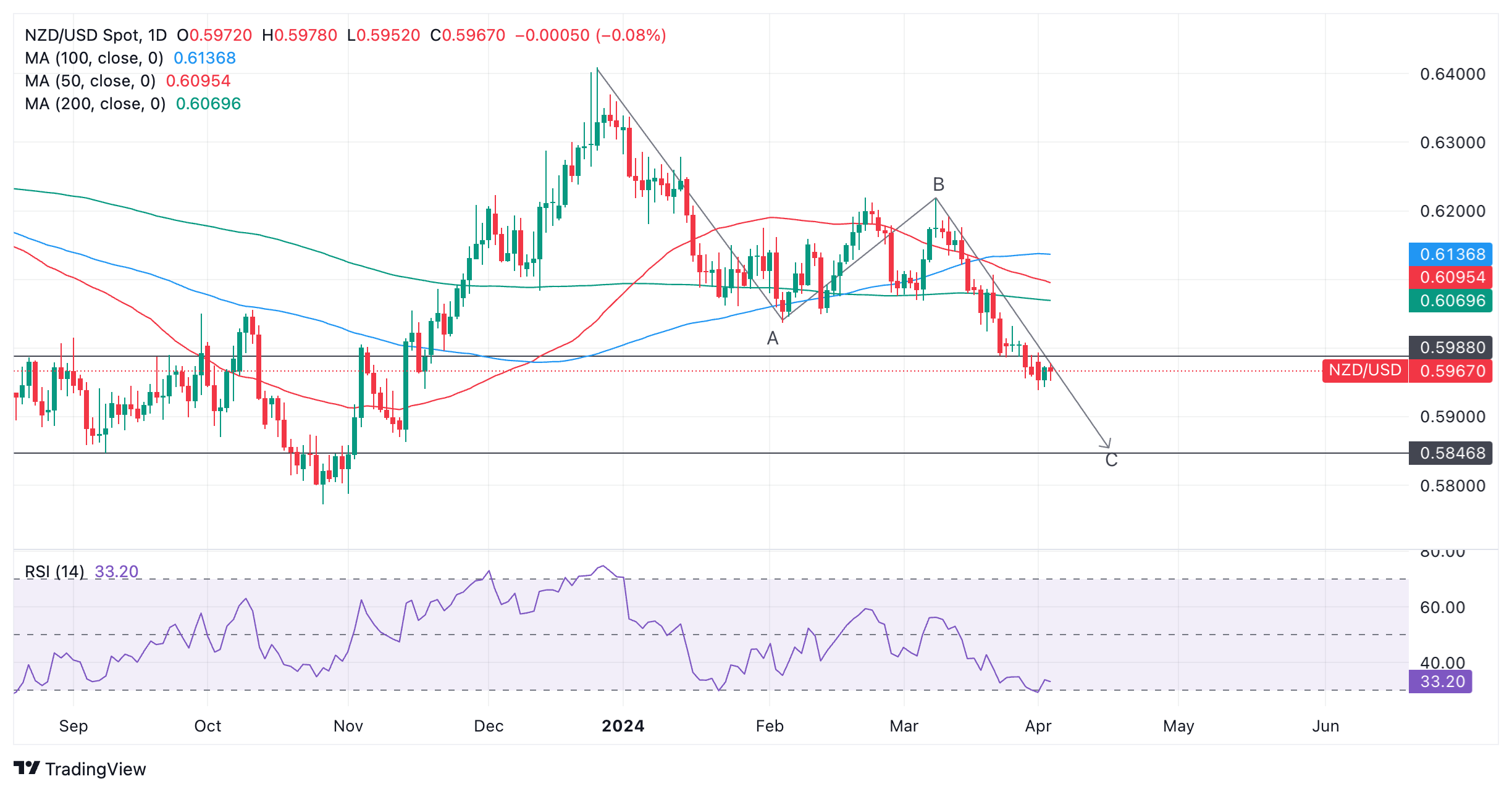
The New Zealand Dollar extends its downtrend in most pairs as broadly weak fundamentals exert pressure.
RBNZ governor Orr says the bank is “laser-focused” on beating inflation.
Technically, price could be about to correct higher within a persistent downtrend.
The New Zealand Dollar (NZD) edges lower in its most heavily-traded pairs on Wednesday following the trend of the previous weeks as bearish fundamentals, including an overall negative outlook for growth, continue to weigh.
Recent comments from the Reserve Bank of New Zealand (RBNZ) Governor Adrian Orr failed to give the Kiwi much support, despite the prospect of the RBNZ maintaining relatively high interest rates. Orr stressed the importance of battling too-high inflation in a speech on Tuesday.
Normally higher interest rates help a currency as they attract more foreign capital inflows but in the case of New Zealand this does not appear to be the case. It is possible this is because the high inflation is accompanied by weak growth after the economy fell into a technical recession in the fourth quarter of 2023.
New Zealand Dollar in downtrend as negative fundamentals weigh
The New Zealand Dollar is under pressure. The latest figures from Statistics New Zealand showed the New Zealand economy contracted by 0.1% in Q4 of 2023 following a 0.3% contraction in Q3.
At the same time, headline inflation remained relatively high at 4.7% during the same reporting period, although it showed a slowdown from the 5.6% recorded in Q3.
Normally weak growth would call for lower interest rates. However, the Reserve Bank of New Zealand (RBNZ) cannot cut interest rates because of too-high inflation.
Elevated price growth is partly a result of structural issues such as a tight labor market, which in turn keeps wage inflation high.
In his speech on Tuesday, Governor Orr said the RBNZ remains “laser-focused on its job to control inflation.”
“We're now in a much happier space, where most central banks feel we're back on top of inflation, [but we are] not there yet,” he added.
Technical Analysis: New Zealand Dollar could undergo a correction
NZD/USD is falling in the final wave C of a bearish three-wave pattern, known as a Measured Move. This type of pattern is made up of three waves, usually labeled ABC.
The end of wave C can be calculated because it is often the same length or a 0.618 Fibonacci ratio of wave A. According to that method of forecasting, wave C still has a way to go before completing.
New Zealand Dollar versus US Dollar: Daily chart
Assuming the pattern unfolds as expected, NZD/USD is likely to fall to a target at roughly 0.5847, corresponding to the end of wave C. It has already met the conservative target measured using the 0.618 Fibonacci ratio of wave A, at 0.5988.
The bearish outlook is complicated by The Relative Strength Index (RSI) momentum indicator, however, which briefly dipped into oversold territory on Monday and then recovered on Tuesday. The entry and then exit from oversold levels is a buy signal. It recommends that short sellers should close their bets and open longs. It suggests the possibility of a correction evolving.
It is therefore quite possible NZD/USD could undergo some upside before eventually continuing lower in line with the dominant downtrend, towards the target generated by the Measured Move.
* The content presented above, whether from a third party or not, is considered as general advice only. This article should not be construed as containing investment advice, investment recommendations, an offer of or solicitation for any transactions in financial instruments.



